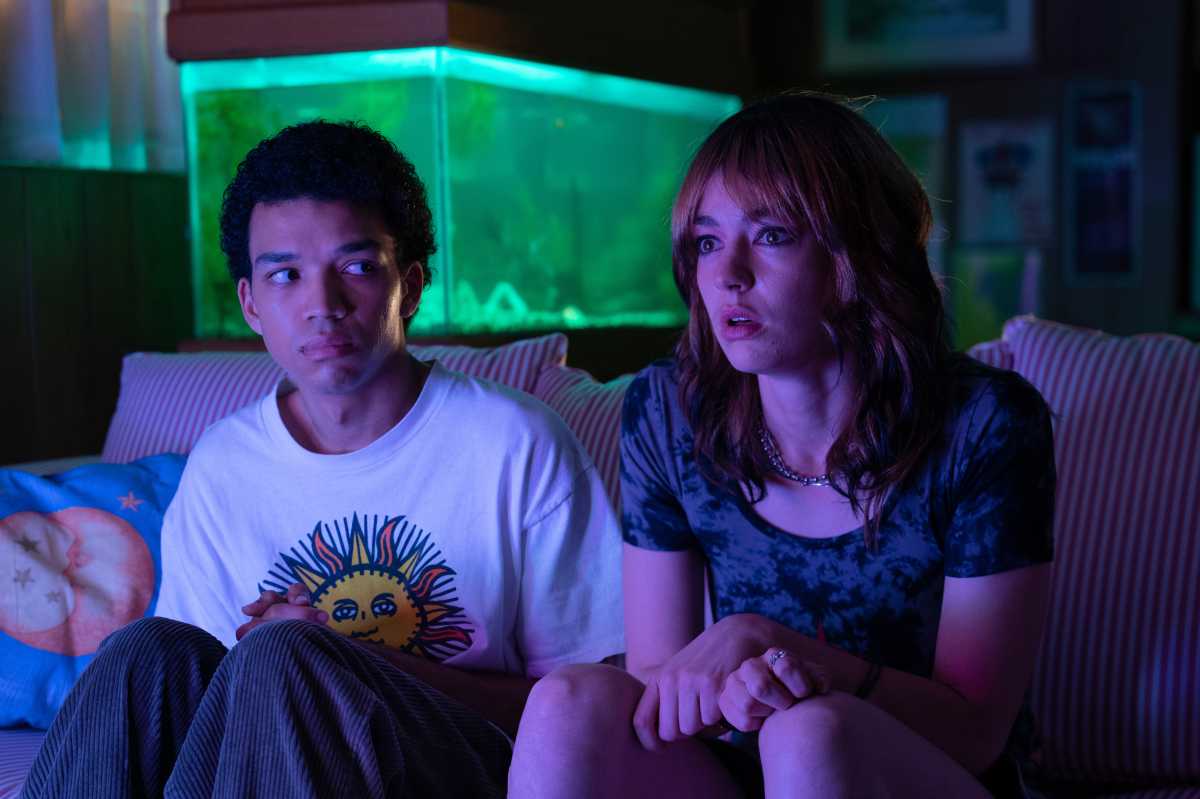With only three films, Jane Schoenbrun has proven themselves a great poet of technological loneliness. Their budget rose drastically with their second feature, “I Saw the TV Glow,” which is distributed by A24, the current master of selling independent film to a wide audience. But their vision remains the same. The extreme alienation of their characters in “We’re All Going to the World’s Fair,” created by a dependence on screens and geographical isolation, persists in “I Saw the TV Glow.” At the time they wrote that film, they were still figuring out their own gender identity. Introducing “I Saw the TV Glow” at a screening last week, Schoenbrun remarked on the enormous changes in their life just in the four years between writing the script and the film’s release. “I Saw the TV Glow” represents something new: a confrontation with media’s re-shaping our brains in potentially liberating and dangerous manners, a depiction of the ‘90s which peels away nostalgia, a vision of trans experience that doesn’t explain everything for cis audiences.
A 7th-grader in 1996, Owen (Justice Smith) befriends Matty (Brigette Lundy-Paine), a girl who’s two years older. He picks up her enthusiasm for the TV show “The Pink Opaque,” a fantasy about two girls who fight magical villains together. (The big bad is called Mr. Melancholy and has a moon for a face.) Matty and Owen’s bond remains mysterious. It’s hard to say whether Owen is in love with his friend or the idea of being her. “The Pink Opaque” accompanies them through most of high school, but then Matty decides to become a runaway and vanishes. This moment shatters any illusion that “I Saw the TV Glow” is set in literal reality, because the film takes a much stranger turn afterwards: people breathe blue cathode rays and bleed light. Even after his friend is gone, Owen remains deeply shut down and obsessed with television.
The suburbs of “I Saw the TV Glow” are liminal spaces, underpopulated and devoid of identifying features. While the film was shot in New Jersey, Phoenix is the only city named within the film. Even if Owen and Matty aren’t literally alone, not even their parents play much of a role in their lives. When they meet at a nightclub to see a rock band (with a cameo by Phoebe Bridgers as its guitarist), it’s startling to learn that their town can support such a place. A huge grocery store exists only to serve them. The initial announcement of Limp Bizkit singer Fred Durst’s role in the film sounded like stunt casting, but he’s perfect for the part of a bald, beefy, stoic middle-aged man. (The band was notorious for room-temperature IQ machismo, with songs like “Nookie” and “Break Stuff.”) He only gets one line of dialogue, alluding to “The Pink Opaque”: “Isn’t that a show for girls?”
Schoenbrun’s style recreates the televisual glow of the title everywhere. Lighting flickers, and faint but odd noises fill the soundtrack. David Cronenberg’s “Videodrome,” a 1983 film about a TV signal that leads to hallucination-triggering brain tumors, is a clear model for some of Schoenbrun’s imagery. It’s full of queer and trans subtext, with scenes like one in which James Woods’ character suddenly develops a vaginal slit in his chest. “I Saw the TV Glow” lifts that image, as well as the more general concept that television and reality are thoroughly interwoven.
“I Saw the TV Glow” isn’t a straightforward coming-of-age story about trans youth. “We’re All Going to the World’s Fair” played out the idea of bodily transformation as a necessary, albeit potentially dangerous, part of growing up. Owen and Matty complement each other’s personalities. Obsessed with “The Pink Opaque,” he rarely articulates what he finds so compelling about the show, while she totes around an episode guide and praises it for being too scary and complex for children. Owen’s longing comes across more in images, especially when he pictures himself living the life of its teenage heroine Isabel (Helena Howard), taking on her beauty and glamour. He also sees a connection to his relationship to Matty in the queer-coded scenes between Isabel and her partner in magic Tara.
The ambivalence about media in “We’re All Going to the World’s Fair” has grown darker in “I Saw the TV Glow.” This film plays out the prospect that a person can get trapped in their house, hypnotized by screens, and remain there till middle age. But without pressing this point, “I Saw the TV Glow” also hints at the way race and class trap people. Unable to leave his hometown, Owen spends decades working menial jobs. The fact that he’s a Black man without a college degree limits his options in life. This is a disturbing nightmare about being stuck in a rut of repression, quietly but forcefully enforced by social conditions. Yet without being overly optimistic, “I Saw the TV Glow” also plays out a dream of change. Someone has scrawled “there’s still time” in pink chalk on the road outside Owen’s house. The ending lays out the possibility of a new beginning.
“I Saw the TV Glow” | Directed by Jane Schoenbrun | A24 | Opens May 3rd at the Angelika Film Center and AMC Lincoln Square



































